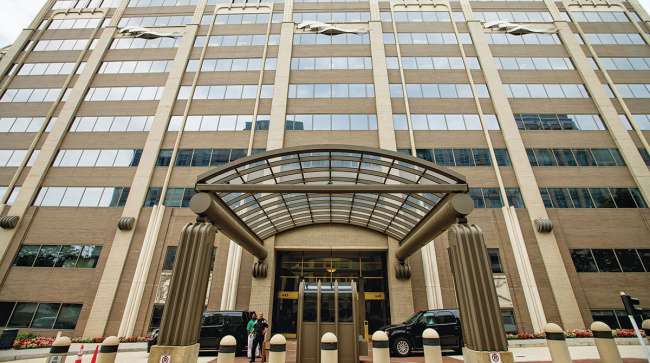Senior Reporter
Senators Press FCC on Transportation Spectrum Use

[Stay on top of transportation news: Get TTNews in your inbox.]
Senior senators recently urged the Federal Communications Commission to approve limited access to a frequency band of spectrum for transportation operations.
Sens. Gary Peters (D-Mich.) and Cynthia Lummis (R-Wyo.) wrote the FCC to enable certain deployments of cellular vehicle-to-everything, or C-V2X, communication technology. Doing so, the senators argued, would facilitate access to potential lifesaving mobility technology.
The technology is instrumental in data sharing for vehicles, road users and internet-of-things infrastructure. Prominent transportation stakeholders are asking FCC to allow them to operate C-V2X in the 5.9 GHz frequency spectrum band.
“C-V2X technology is poised to save lives, will pave the way for the future of automobile and transportation infrastructure, and is supported by public and private transportation stakeholders from local and state governments to industry, academia and public safety groups,” the senators wrote FCC Chairwoman Jessica Rosenworcel on Feb. 13.
"Swift action on these waivers is essential given C-V2X technology’s potential to reverse rising roadway fatalities. The National Highway Traffic Safety Administration estimated that 42,915 people died in motor vehicle traffic crashes in 2021, a 10.5% increase from 2020,” added the senators, members of the Commerce Committee on freight. “Many of these deaths are avoidable if we facilitate broad deployment of roadway safety technologies like C-V2X. Indeed, NHTSA has previously estimated that safety applications enabled by V2X could eliminate or mitigate the severity of more than 80% of light-vehicle crashes.”
Groups endorsing the senators’ push for the spectrum band included the National Safety Council, the Alliance for Automotive Innovation and the American Association of State Highway and Transportation Officials.
What is V2X? Game-changing safety technology. It enables vehicles to see around corners, talk to other vehicles and communicate w/ pedestrians, bicyclists, traffic lights and #infrastructure – instantly and in real-time… Important work to (finally) get this tech on the roads. 👇 https://t.co/45xSzdE1qa — Alliance for Automotive Innovation (@autosinnovate) February 14, 2023
“On average, more than 100 people are killed every day in the U.S. as a result of crashes. For years, the National Safety Council has called on the FCC to remove barriers to deployment of technology solutions to save lives,” Mark Chung, executive vice president of roadway practice at National Safety Council, said in a statement accompanying the senators letter to the FCC.
“Vehicle-to-everything or V2X is a game-changing automotive safety technology. It enables vehicles to see around corners, talk to other vehicles on the road, and to communicate with pedestrians, bicyclists, traffic lights and other infrastructure — instantly and in real time,” said John Bozzella, president and CEO of Alliance for Automotive Innovation. “This connected vehicle technology exists today, and major automakers are prepared to deploy it. Unfortunately, waiver petitions to bring V2X technology to U.S. roadways have languished at the FCC for more than a year. Senators Peters and Lummis understand the potential of V2X to increase safety and save lives, and they’re right to push the FCC to finish up the process quickly so this V2X technology can finally get on the roads.”
Want more news? Listen to today's daily briefing above or go here for more info
“AASHTO and its members have been at the forefront of the development and deployment of connected and automated vehicles, which have tremendous potential in significantly improving the safety of our surface transportation system as well as the mobility and accessibility for all system users,” added Jim Tymon, executive director of AASHTO. “The FCC must take swift action for us to realize the critical life-safety and crash-prevention benefits enabled through deployment of C-V2X technologies.”
The FCC in 2020 reassigned an aspect of the 5.9 GHz transportation spectrum to allow unlicensed Wi-Fi content providers to promote wireless access. The agency’s move freed up the lower 45 megahertz portion of the 5.9 GHz band for unlicensed content. The FCC explained that doing so responded to demand for Wi-Fi. The transportation safety spectrum band was set up more than two decades ago to facilitate autonomous vehicle communications, among other technologies.




